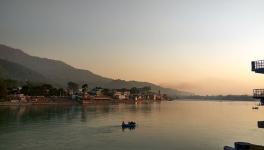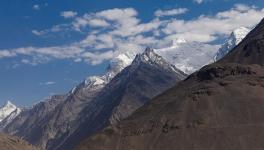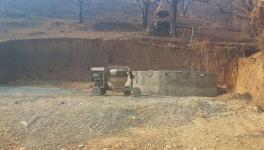Heat Stress: Experts Urge Work on Heat Action Plans

Patna: With an intense heatwave affecting the everyday life of millions in north India, mainly the working class and the impoverished, and the trend is likely to increase in coming years, experts have urged the government to work on heat action plans to deal with its adverse impact.
The ongoing heatwave also affected the economy, as reflected in the country’s power and coal crises, contrary to the Central government’s claim.
Two days after some parts of Delhi recorded maximum temperature above 49 degrees celsius and several cities across north India recorded temperatures above 45 degrees celsius, experts in India are also stressing the need for actions to help people survive the climate change-driven extreme heat.
“While mitigation measures are a must to limit future warming, the extreme, frequent, and long-lasting spells of heatwaves are no longer a future risk. It is already here and is unavoidable,” said Dr Abhiyant Tiwari, assistant professor & programme manager, Gujarat Institute of Disaster Management, at a recently held workshop on heat stress in India: Accelerating mitigation and adaptation efforts in the face of a changing climate, organised by Climate Trends.
Tiwari added that “Our heat action plans must ensure adaptation measures like public cooling areas, ensuring uninterrupted electricity, access to safe drinking water, and changing the work hours of labourers or workers for the most vulnerable ones at the bottom of the pyramid, especially during extreme heat days.”
Dr Dileep Mavalankar, director of the Indian Institute of Public Health Gandhinagar (IIPHG), said, “People need to watch out for these advisories, stay indoors, keep themselves hydrated and rush to the nearest health centre if they feel moderate signs of heat-related illness. There’s a special need to monitor the old and vulnerable, just like we did during Covid, as they can develop heat strokes even when sitting at home.
“Cities should monitor all-cause mortality data daily along with data for hospital admissions and ambulance calls to compare it with the last five years of data to get the real indication of heat stress on mortality.
“This is a very early heatwave, and these normally have a higher rate of mortality since adaptation and preparedness are lower during these months of March and April. The central, state and city governments should also focus on this, especially when IMD alerts are in orange and red, and they should put out warning advertisements in newspapers, TV and radio to warn the public. This is a warning signal for what is to come in May and June. If we take effective action now, we can prevent a lot of morbidity and mortality.”
Martand Shardul, policy director, Global Wind Energy Council (GWEC) India, said, “Frequent climate extremes and power shocks only indicate how much climate action and energy transition needs are intertwined and affected by not just domestic events but also regional and international tremors. Stocking coal through increased domestic production and imports might yield relief; however, these exigencies demand a rapid shift to clean energy and enhanced renewable energy investments to boost social good, planetary health, and economic resilience.”
Aarti Khosla, director of Climate Trends, said, “The fact that we have blundered into extreme heatwaves, the first of its kind in 120 years, is no coincidence. Scientific studies have shown that global surface temperatures have increased by 1.1degrees C since pre-industrial levels. More heat and associated greater power demand have created a power crisis, which is, in reality, the poor planning with regard to transporting coal and transmitting power. It is not a shortage of coal. Neither is it a shortage of power capacity. Combined with the global pandemic and the Ukraine-Russia war, which has increased coal prices internationally, it should be a death knell for coal. Still, ironically it is our only option to bring more power on immediately. The time to ramp up wind and solar is now so that we are prepared to deal with a warming world.”
Bharath Jairaj, director, WRI India, Energy Program, said that “The present coal crisis is not just about the availability of the resource or its transportation from mines and ports to the power plants. It points to the lack of integrated planning by relevant state and national agencies and the continued preoccupation with short-term issues, which crowds out the required time and space for medium to long term issues. India needs to invest in renewables aggressively – from the current 10—12 GW per year to 35-36GW per year if we are to meet the 2030 target of 500 GW of non-fossil fuel capacity.”
Jairaj added, “We have to aggressively support investments in energy storage and re-introduce favourable regulatory conditions for rooftop and behind-the-meter investments in renewable energy by end consumers. Equally important, we need to see policy certainty and continuity in the country – so that investors and developers can make medium to long term decisions.”
Get the latest reports & analysis with people's perspective on Protests, movements & deep analytical videos, discussions of the current affairs in your Telegram app. Subscribe to NewsClick's Telegram channel & get Real-Time updates on stories, as they get published on our website.
























